Day 61 - Jesus: Rice Superstar
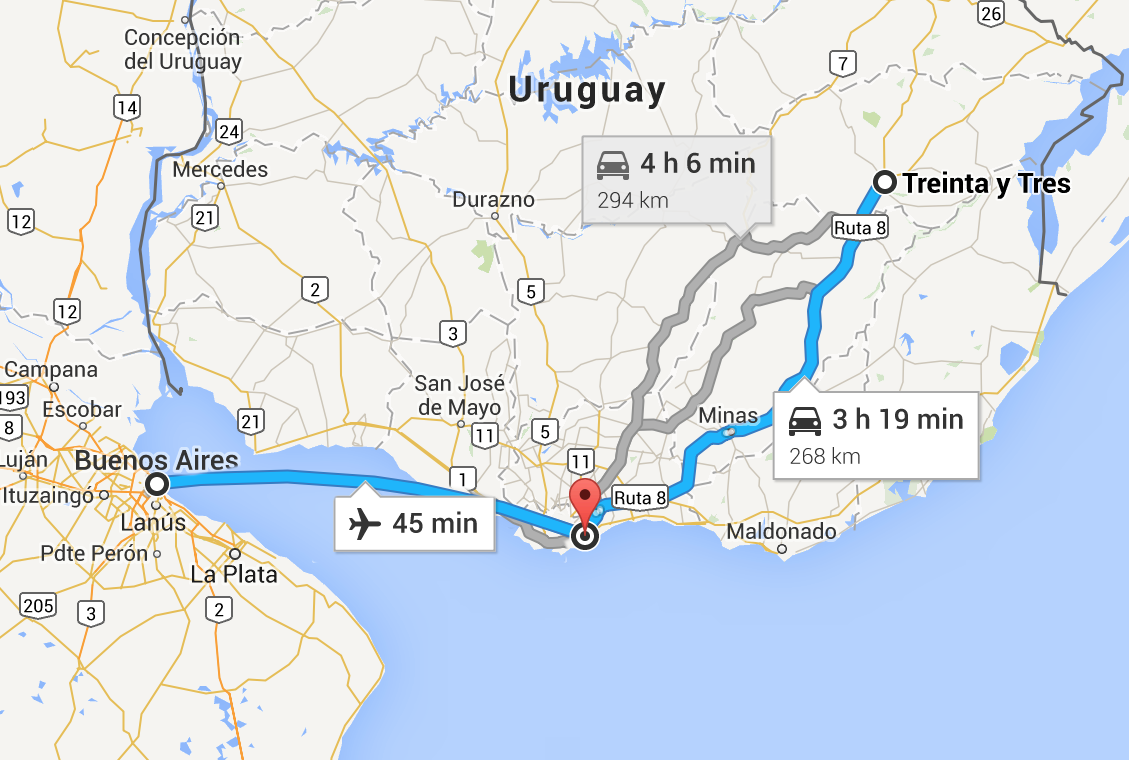 I'd only ever spent 3 hours in Uruguay before this trip, but for some reason I've always liked it. This time there was no queue at customs, my bag was the first off the plane (that's a new one for me) and I could buy a cheap local sim card at the airport. A great start. Unfortunately I had not been able to arrange anything constructive for the weekend, so it was tourist time. After mucking around for a couple of days I headed to Treinta y Tres (which means thirty three), and spent the night in a hotel which was perfectly comfortable, but wouldn't have been out of place in 1964 Bulgaria.This morning I had an appointment with Jesus Castillo, a rice agronomist working for INIA. He had been recommended to me by Michael Eyres as someone who knew all about improving soils.
I'd only ever spent 3 hours in Uruguay before this trip, but for some reason I've always liked it. This time there was no queue at customs, my bag was the first off the plane (that's a new one for me) and I could buy a cheap local sim card at the airport. A great start. Unfortunately I had not been able to arrange anything constructive for the weekend, so it was tourist time. After mucking around for a couple of days I headed to Treinta y Tres (which means thirty three), and spent the night in a hotel which was perfectly comfortable, but wouldn't have been out of place in 1964 Bulgaria.This morning I had an appointment with Jesus Castillo, a rice agronomist working for INIA. He had been recommended to me by Michael Eyres as someone who knew all about improving soils.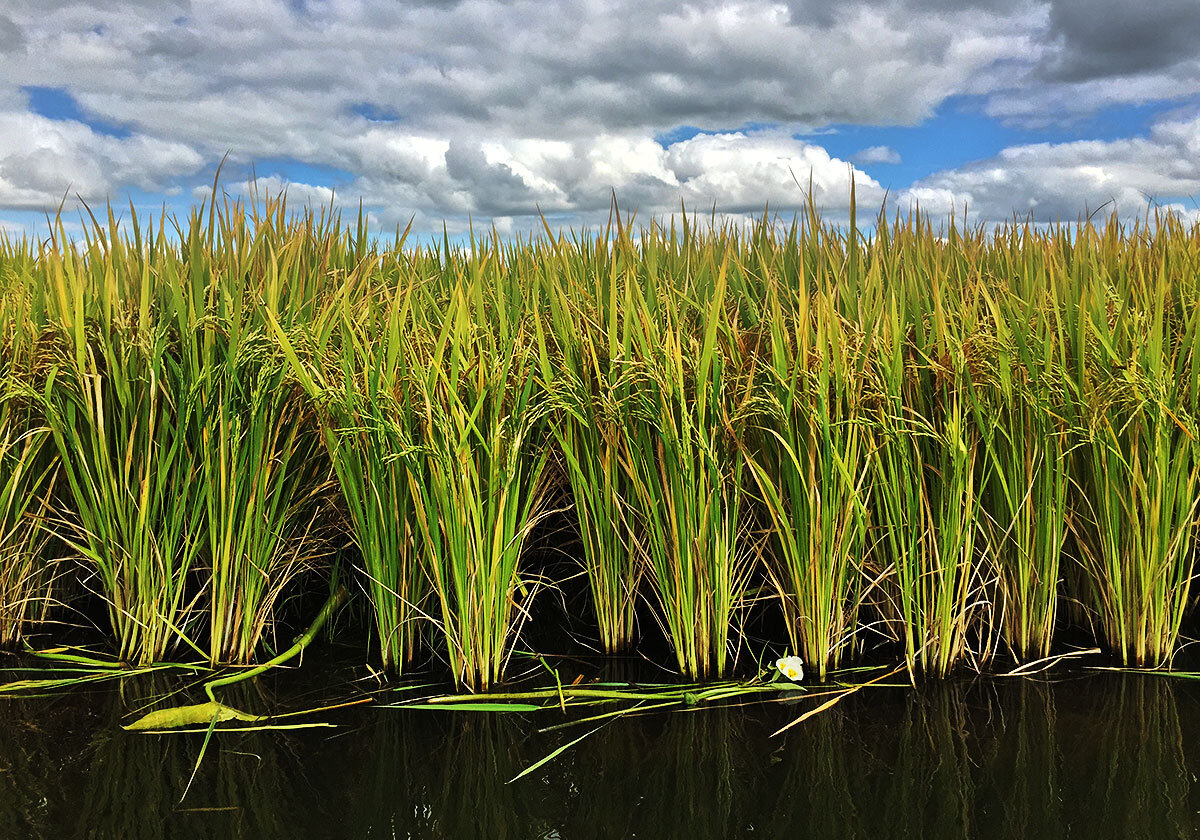 INIA is partly funded by the government, and partly by the farmers, through levies on their sales. They perform trials in both cropping and livestock management, as well as having big labs which will test grains, forage, or whatever the farmer needs. Their building was quite new, and very smart, in stark contrast to similar government organisations over the river in Argentina.
INIA is partly funded by the government, and partly by the farmers, through levies on their sales. They perform trials in both cropping and livestock management, as well as having big labs which will test grains, forage, or whatever the farmer needs. Their building was quite new, and very smart, in stark contrast to similar government organisations over the river in Argentina.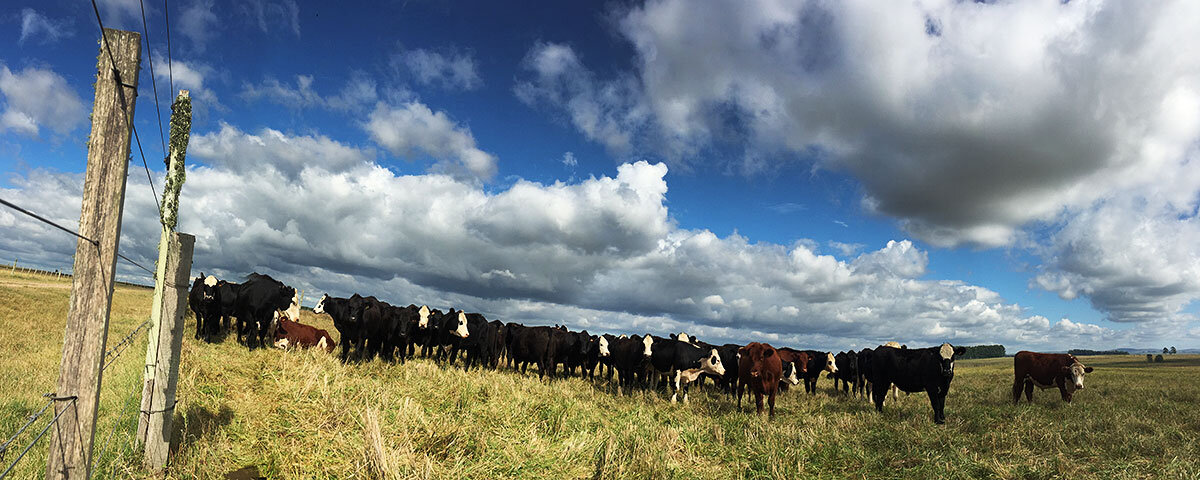 They've got some of the best soil in the country over here, but it's only 30cm deep, with a clay subsoil. That means they don't have a huge water holding capacity, and so are normally either too dry, or totally flooded. Traditionally there has been a lot of grazing, and that continues today. It's one of the few places in the world where it is standard practice to graze both sheep and cattle in the same field at the same time. I've always thought this sounded like a pretty sensible idea, but all my (super conservative) vet friends start having a fit when you mention it.
They've got some of the best soil in the country over here, but it's only 30cm deep, with a clay subsoil. That means they don't have a huge water holding capacity, and so are normally either too dry, or totally flooded. Traditionally there has been a lot of grazing, and that continues today. It's one of the few places in the world where it is standard practice to graze both sheep and cattle in the same field at the same time. I've always thought this sounded like a pretty sensible idea, but all my (super conservative) vet friends start having a fit when you mention it.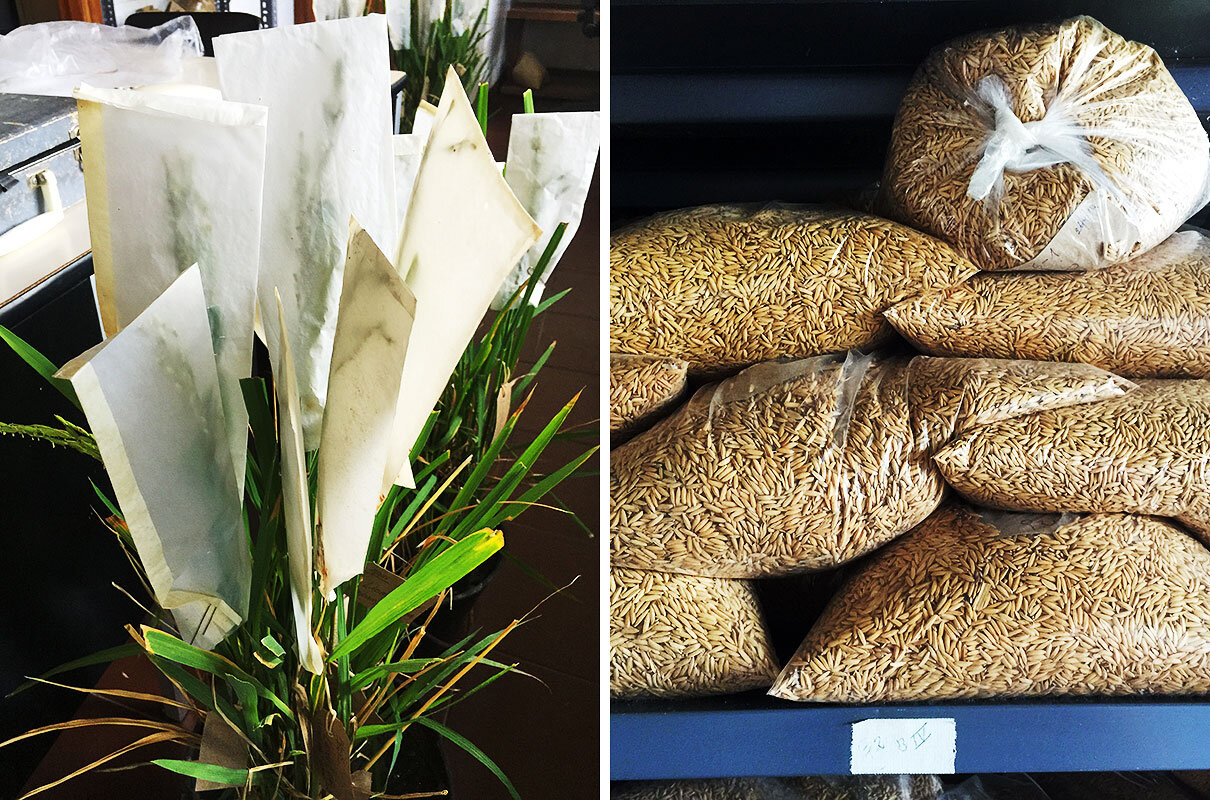 They have two research stations near Treinta y Tres, for upland and lowland systems. The upland system is dry land farming, and they are testing three rotations. All the rotations have two years where they grow soya beans - wheat - sorghum - oat cover crop. At this point they differ: one starts all over again, and the other two go into pasture, either for two years or four.On the lowland farms, the main crop is the rice. Uruguay is the second most productive rice growing country on the planet - only the USA averages a higher yield per hectare. On the low land INIA station they also have rotation trials, ranging from intensive rice - cover crop - soya - cover crop, to the traditional rice and perennial pasture.
They have two research stations near Treinta y Tres, for upland and lowland systems. The upland system is dry land farming, and they are testing three rotations. All the rotations have two years where they grow soya beans - wheat - sorghum - oat cover crop. At this point they differ: one starts all over again, and the other two go into pasture, either for two years or four.On the lowland farms, the main crop is the rice. Uruguay is the second most productive rice growing country on the planet - only the USA averages a higher yield per hectare. On the low land INIA station they also have rotation trials, ranging from intensive rice - cover crop - soya - cover crop, to the traditional rice and perennial pasture.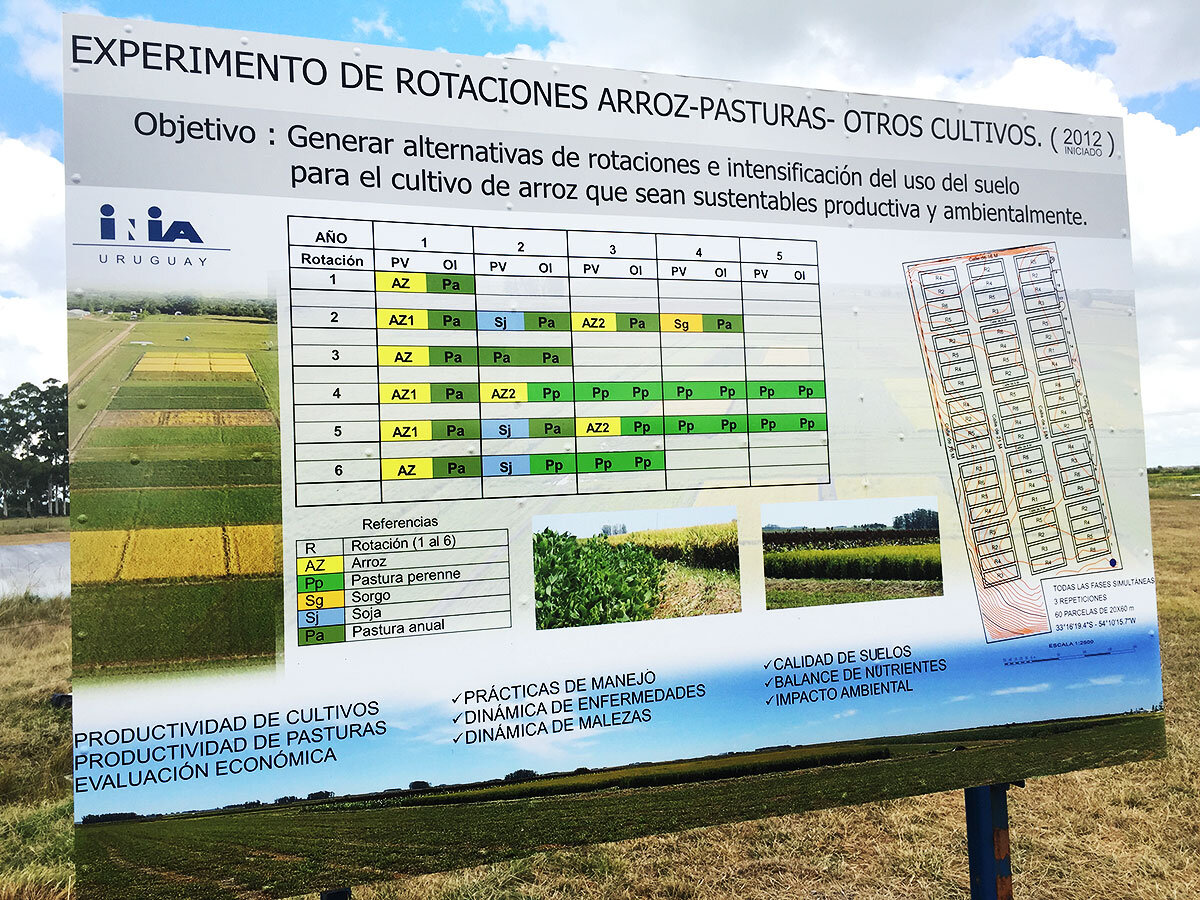 The cover crop they tend to use in this lowland trial is Italian ryegrass. What's really interesting is that they put it on with an airplane, both into the soya and the rice. Uniquely, in my experience, they are happy with the results, and say it gives a good even germination. This is understandable in the rice, as they put it on just after the field is drained, so there is plenty of moisture in the soil. In the soya it goes on about a month before harvest, timed just before the leaves start to fall off. When the leaf does come off, it covers the ryegrass seed and provides humidity to help germination. In both cases, after harvest the grass is 5cm or so tall, and gets going very quickly - to be grazed before the next cash crop is planted.The trial results are interesting - SOM is maintained in all the rotations that include pastures, and degraded in the ones that don't. However, they have only just started using cover crops in the last couple of years, and the hope is that this may make the continuous cropping more sustainable.
The cover crop they tend to use in this lowland trial is Italian ryegrass. What's really interesting is that they put it on with an airplane, both into the soya and the rice. Uniquely, in my experience, they are happy with the results, and say it gives a good even germination. This is understandable in the rice, as they put it on just after the field is drained, so there is plenty of moisture in the soil. In the soya it goes on about a month before harvest, timed just before the leaves start to fall off. When the leaf does come off, it covers the ryegrass seed and provides humidity to help germination. In both cases, after harvest the grass is 5cm or so tall, and gets going very quickly - to be grazed before the next cash crop is planted.The trial results are interesting - SOM is maintained in all the rotations that include pastures, and degraded in the ones that don't. However, they have only just started using cover crops in the last couple of years, and the hope is that this may make the continuous cropping more sustainable.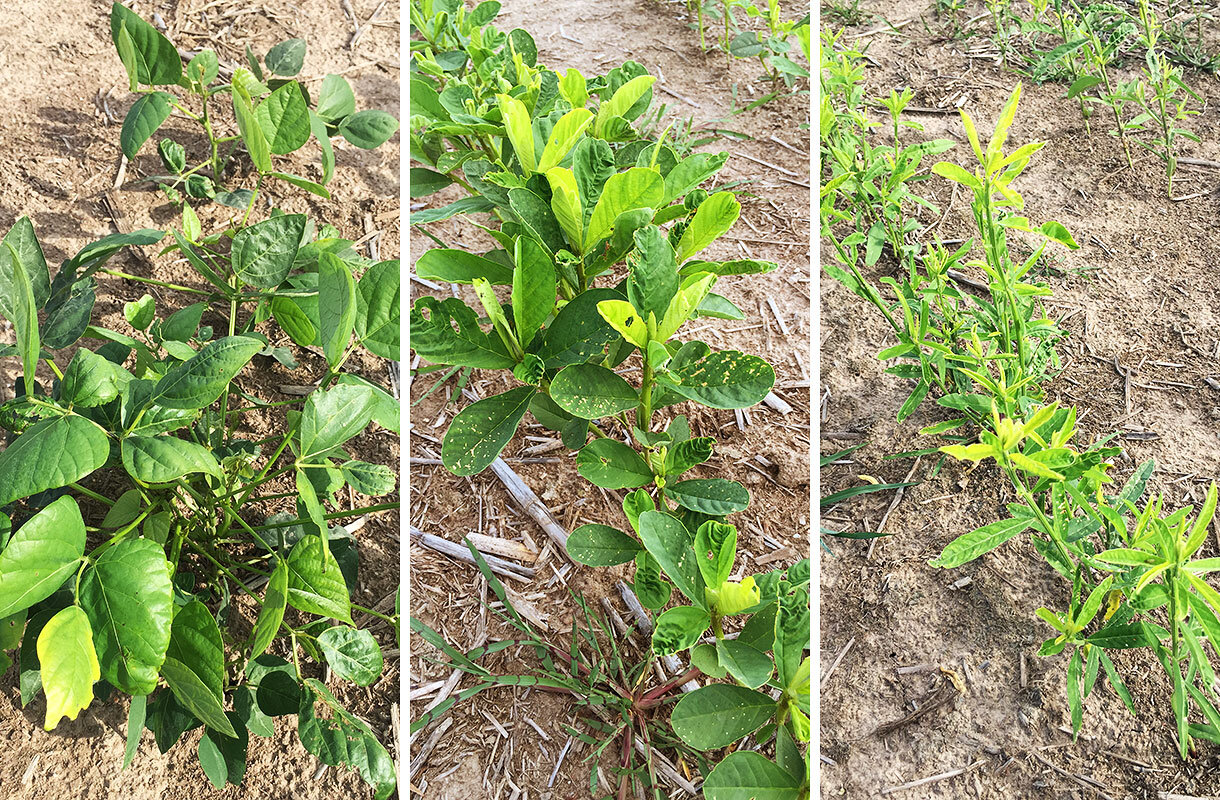 In the '50s & '60s no-till had not been adopted, and traditional farming methods were terrible at controlling erosion. The average farm lost 20-30t/ha of soil each year, into the rivers. Since the '90s this has improved a lot, but in the last three years the government has decided it had to do something about the country's soils - agriculture is a big proportion of Uruguay's GDP. What they have come up with is a system whereby the landowner (and farmer if it is a different person) must submit their long-term cropping plans for approval. Trial data from INIA is used to predict how this rotation will affect the soil erosion, taking into account topography, soil types, climate, use of cover crops, pasture phases etc. The magic number is 7t/ha. If you lose more soil than this each year, you will not get approval to go farming (or else there's a big fine). It sounds like a pretty sensible way of protecting the country's asset, although given what has happened in the UK with the three crop rule (no one is telling ME how to farm!) I don't think it would be a popular move - especially because here they often stipulate at least some pasture.
In the '50s & '60s no-till had not been adopted, and traditional farming methods were terrible at controlling erosion. The average farm lost 20-30t/ha of soil each year, into the rivers. Since the '90s this has improved a lot, but in the last three years the government has decided it had to do something about the country's soils - agriculture is a big proportion of Uruguay's GDP. What they have come up with is a system whereby the landowner (and farmer if it is a different person) must submit their long-term cropping plans for approval. Trial data from INIA is used to predict how this rotation will affect the soil erosion, taking into account topography, soil types, climate, use of cover crops, pasture phases etc. The magic number is 7t/ha. If you lose more soil than this each year, you will not get approval to go farming (or else there's a big fine). It sounds like a pretty sensible way of protecting the country's asset, although given what has happened in the UK with the three crop rule (no one is telling ME how to farm!) I don't think it would be a popular move - especially because here they often stipulate at least some pasture.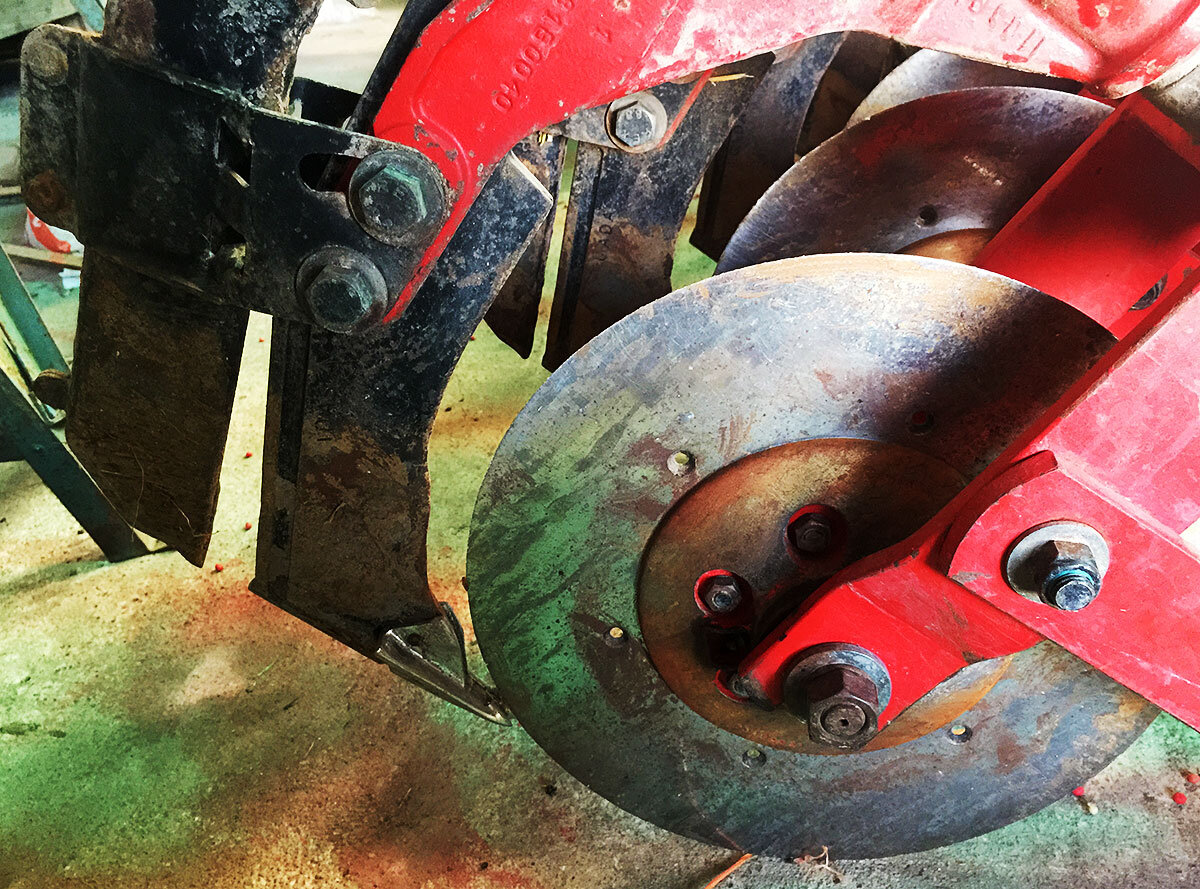 Of course it does beg the question, why settle for any soil loss at all? Apparently even with low intensity farming on native grasslands they still lose ~2t/ha/yr, but in the past something must have created the soil. Maybe God? In my opinion, if they find out how to make soil, with profitability taken out of the equation, then maybe some of those techniques could be used in day-to-day farming. Sounds like a good topic for a Nuffield.
Of course it does beg the question, why settle for any soil loss at all? Apparently even with low intensity farming on native grasslands they still lose ~2t/ha/yr, but in the past something must have created the soil. Maybe God? In my opinion, if they find out how to make soil, with profitability taken out of the equation, then maybe some of those techniques could be used in day-to-day farming. Sounds like a good topic for a Nuffield.
